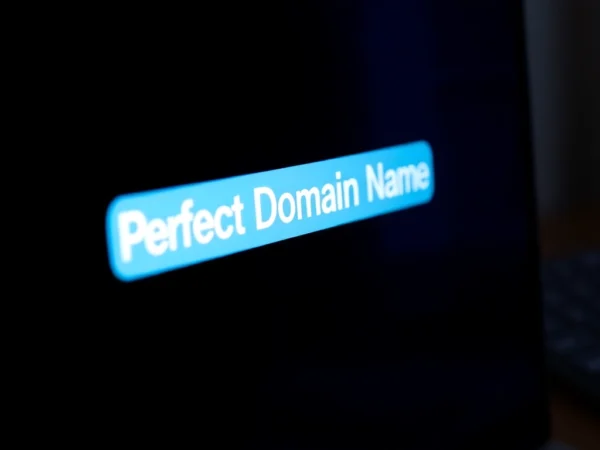How to Position Yourself as a Leading Freelance Product Designer for High-Paying Opportunities
In today’s fast-evolving digital landscape, the demand for highly skilled freelance professionals continues to surge, particularly within specialized roles that drive innovation and user engagement. Among these, the freelance product designer stands out as a vital contributor, blending creativity with strategic problem-solving to deliver compelling digital experiences. Whether you’re an aspiring freelance product designer or a seasoned expert aiming to maximize your earning potential, understanding how to position yourself effectively in this competitive market is crucial. This guide provides comprehensive insights into building a successful freelance career tailored to high-paying opportunities, focusing on skills, portfolio development, strategic project acquisition, pricing, and reputation management.
Understanding the Role of a Freelance Product Designer
At its core, a freelance product designer is responsible for creating intuitive, aesthetically pleasing, and user-centered digital products — from mobile apps to web platforms. Unlike general graphic designers, product designers holistically approach the user journey, integrating UX research, visual design, prototyping, and collaboration with development teams. Being a freelance professional offers the advantage of flexible working arrangements and diverse project portfolios, but it also demands a unique blend of skills and proactive market strategies.
Key skills and technical expertise required
To thrive as a freelance product designer, a robust skill set is essential. First, mastery in user experience (UX) design principles — such as user research, wireframing, and usability testing — forms the foundation. Additionally, proficiency in visual design tools like Figma, Adobe XD, Sketch, and Adobe Creative Suite is critical. Knowledge of front-end technologies like HTML, CSS, and basic JavaScript can provide an advantage in communicating with developers and understanding technical constraints. Strong understanding of interaction design, accessibility standards, and responsive design ensures that solutions are inclusive and adaptable across devices.
Beyond technical tools, soft skills such as active listening, communication in proposals, and the ability to translate client visions into actionable design plans are crucial. Staying updated with industry trends, such as evolving design systems and emerging UI patterns, is vital to deliver innovative solutions that stand out in the market.
Market demand and industry trends for freelance product designers
The demand for freelance product designers has experienced exponential growth driven by the proliferation of startups, digital transformation initiatives, and the ongoing shift to remote work. As companies prioritize user experience as a competitive differentiator, high-quality design talent is increasingly sought after for short-term projects and long-term collaboration.
Recent industry trends include the rise of design systems as a standard practice, a focus on accessible and inclusive design, and integrating user feedback via analytics to continually optimize products. Additionally, many organizations prefer freelance designers for specialized tasks such as conducting UX audits or creating innovative prototypes, which further expands lucrative opportunities.
Regions like France’s major cities—Paris, Lyon, and Marseille—are becoming hotspots for technological innovation, and freelance product designers can leverage these hubs to tap into high-value projects. The market also values cross-disciplinary skills, such as designOps, motion design, and branding integration, which can significantly elevate perceive value and compensation.
Examples of successful freelance product design projects
Successful projects often integrate a thorough understanding of client needs with innovative design solutions. For instance, a freelance designer might collaborate with a fintech startup to overhaul their mobile experience, resulting in increased user retention and higher onboarding conversions. Alternatively, designing a comprehensive accessible website for a nonprofit organization that increases their reach demonstrates both social impact and marketability.
Case studies often reveal the importance of a structured process — from initial discovery and stakeholder interviews to wireframe iterations, usability testing, and final delivery. The ability to clearly articulate problem-solving strategies and measurable results often secures repeat business and referrals, key components of long-term success.
Building a Compelling Freelance Product Designer Portfolio
Your portfolio is your calling card—showcasing your skills, versatility, and results to prospective clients. An effective portfolio not only displays polished visual work but also narrates the story behind each project, demonstrating thought process, challenges, and measurable impacts.
Creating a showcase that highlights versatility and results
A well-rounded portfolio includes a variety of projects: mobile apps, web platforms, enterprise solutions, and accessible designs. Each project should emphasize your role, the challenge, your specific contributions, and the outcome—preferably with quantitative data like increased conversion rates or user satisfaction scores. Incorporating visual case studies presents complex workflows clearly and demonstrates your strategic approach.
Remember to tailor your portfolio to showcase your strongest skill set aligned with the types of high-paying clients you’re targeting. Consistency in presentation and clarity ensures your work communicates professionalism and competence.
Using case studies to demonstrate process and value
Case studies are a powerful storytelling tool to differentiate your offerings. Break down projects into stages: discovery, ideation, design, validation, and implementation. Highlight the user problems addressed, your design thinking approach, collaborative efforts, and the final results achieved. Including metrics such as increased user engagement or reduced onboarding time provides concrete evidence of your impact.
Visuals like wireframes, prototypes, and final designs should complement your narrative, making it easier for potential clients to understand your working style and the tangible benefits of your contributions.
Leveraging online platforms to reach clients effectively
Platforms like Behance, Dribbble, and LinkedIn are essential for visibility. Regularly updating your profiles with recent work, maintaining an active presence, and engaging with industry communities increases inbound inquiries. Additionally, specialized freelance marketplaces such as JobForFreelancers can help connect you with high-paying projects aligned with your expertise. An optimized profile—using keywords like “freelance product designer”—enhances searchability and attracts targeted clients.
Practical Strategies to Find High-Paying Freelance Missions
Securing lucrative projects requires proactive positioning and targeted outreach. Here are some proven strategies:
Optimizing your profile with targeted keywords like ‘freelance product designer’
Use relevant keywords across your profiles and proposals to improve discoverability. For example, including phrases like “experienced freelance product designer specializing in UX/UI for mobile and web applications” helps match your profile with client searches. Consistently updating your skills and project descriptions to reflect current expertise also enhances your chances of attracting high-value clients.
Creating proposals that stand out in competitive bids
Tailor each proposal to the specific project requirements. Demonstrate understanding of the client’s goals, present initial ideas, and outline your process and deliverables. Highlight relevant case studies and include clear, concise language. Offering a brief, mock-up or concept can set you apart, showing initiative and confidence. Clear communication about your availability, timeline, and budget fosters trust and credibility.
Networking and staying visible in industry communities
Active participation in online forums, industry webinars, and local meetups keeps you connected with potential clients and other freelancers. Contributing to discussions and sharing insights positions you as a thought leader. Additionally, leveraging client referrals and building long-term relationships often lead to higher-paying projects, especially when previous clients testify to your expertise and professionalism.
Pricing Your Services as a Freelance Product Designer
Pricing is a critical component of sustainable freelancing. Your rates should reflect your experience, project complexity, and market demand. Common models include hourly rates, daily rates, or fixed project fees.
Determining competitive yet profitable rates
Research the going rates within your niche and region; high-demand areas like France’s Paris, Lyon, and Marseille often command premium rates. Industry data suggests that a seasoned freelance product designer can charge between €600 and €1200 per day, depending on expertise and project scope. Consider your skill level, project value, and operational costs to set a rate that ensures profitability without undervaluing your work.
Negotiation techniques for premium projects
Approach negotiations confidently by emphasizing your unique value proposition, such as specialized experience in SaaS products or accessibility compliance. Offer tiered options—basic, standard, and premium—to provide flexibility and demonstrate parallel value scales. Always prepare to justify your rates with relevant experience, project results, and market comparisons.
Adjusting rates based on project complexity and client profile
Customize your pricing based on project intricacies; complex integrations or high-stakes projects warrant higher fees. For clients with a proven track record or in lucrative industries, don’t hesitate to negotiate for better compensation reflecting added value. Maintaining transparency about your rates and the rationale builds trust and reduces scope disputes.
Enhancing Your Reputation and Securing Long-Term Clients
Building a strong reputation is pivotal for a thriving freelance career. Quality work, professionalism, and strategic relationship management foster loyalty and referrals.
Soliciting client feedback and referrals
Encourage clients to provide detailed feedback and testimonials, ideally highlighting your problem-solving skills and impact. Referrals are a cornerstone of long-term success, so politely ask satisfied clients for introductions to their network. These third-party endorsements significantly boost credibility in a crowded marketplace.
Maintaining professionalism and clear communication
Deliver on commitments, manage expectations, and ensure consistent, respectful communication. Prompt responses and transparent updates prevent misunderstandings. A professional approach not only secures repeat business but also enhances your standing within industry networks and platforms like JobForFreelancers.
Continuing education and skill development to stay relevant
The digital design landscape evolves rapidly, with new tools, trends, and regulations emerging regularly. Enroll in courses, attend workshops, and participate in industry webinars to keep your skills sharp. Specializing in niche areas such as accessibility or voice UI can set you apart and command premium fees.
In conclusion, establishing yourself as a successful freelance product designer for high-paying opportunities involves strategic skill development, a compelling portfolio, proactive project sourcing, and continuous reputation management. With dedication and a client-centric approach, you can carve out a lucrative niche in this dynamic industry, leveraging platforms like JobForFreelancers to connect with top-tier projects across major cities and emerging tech hubs.










